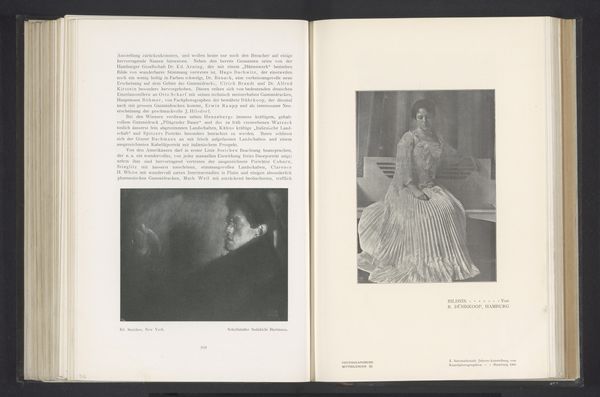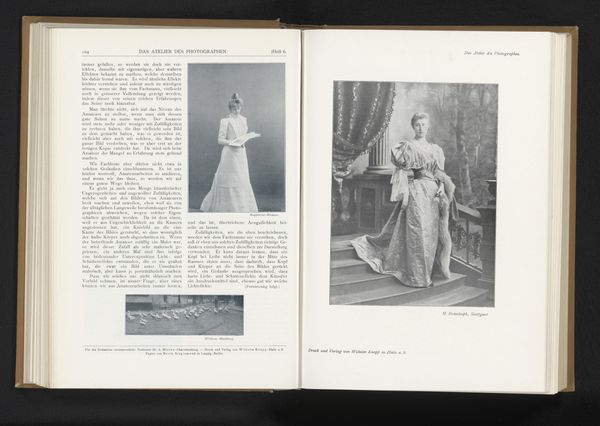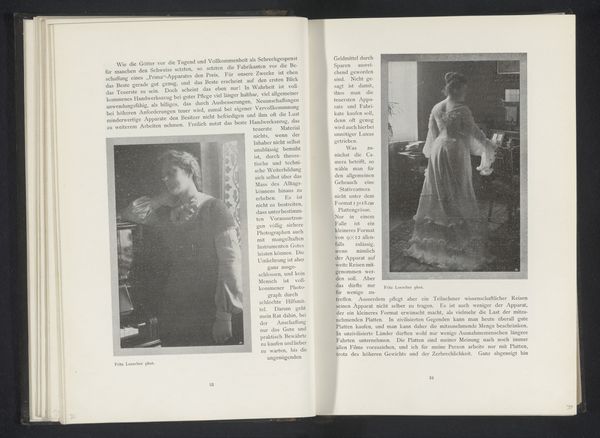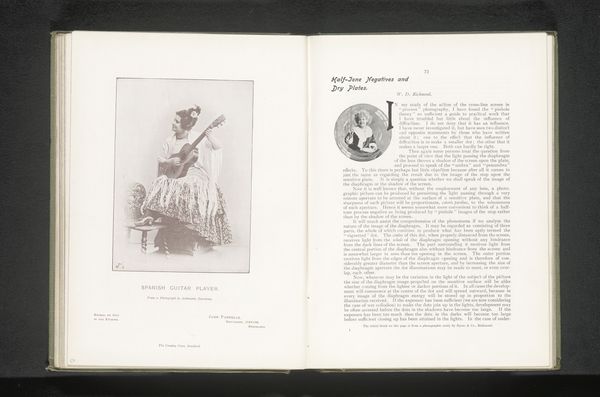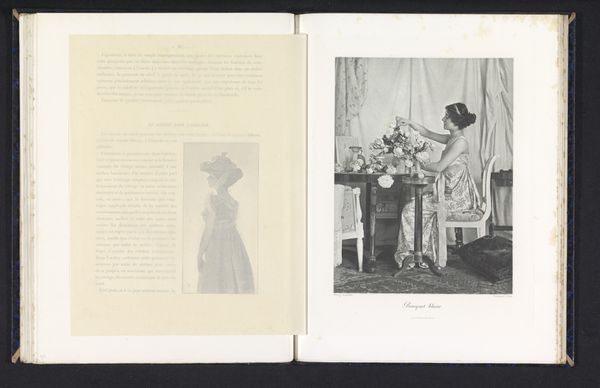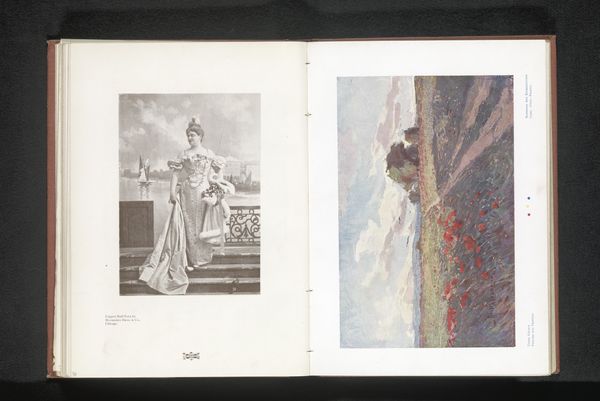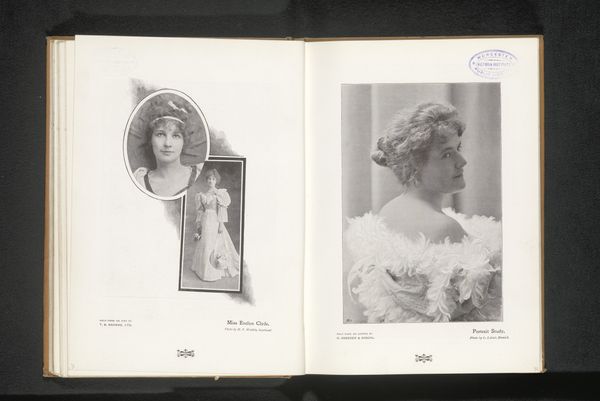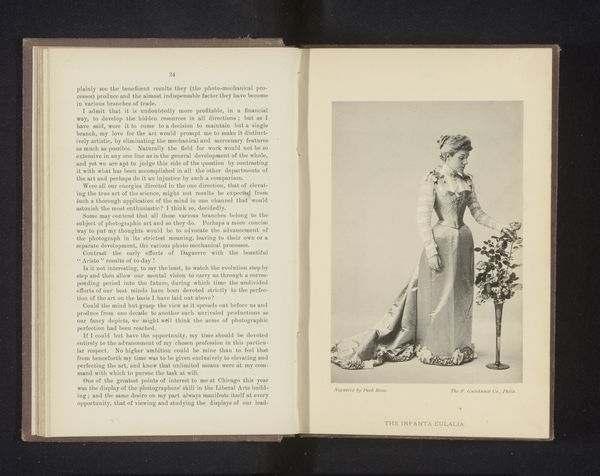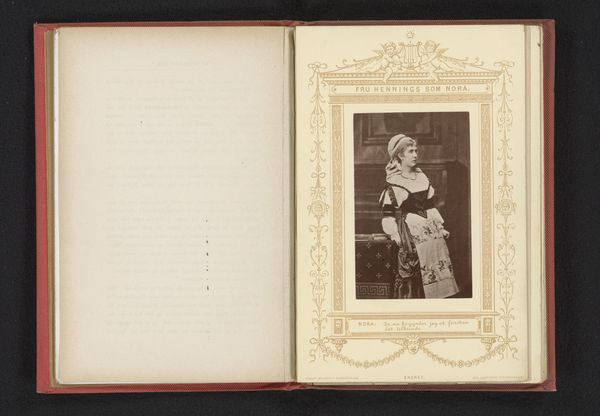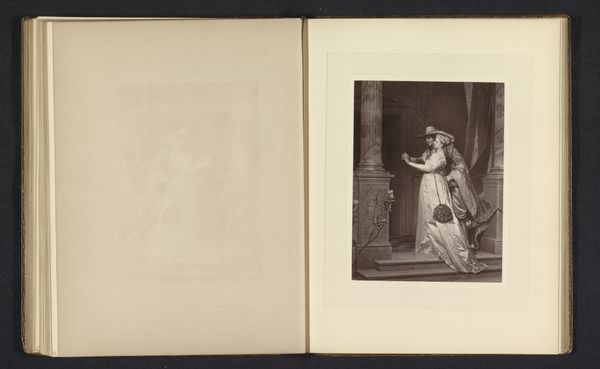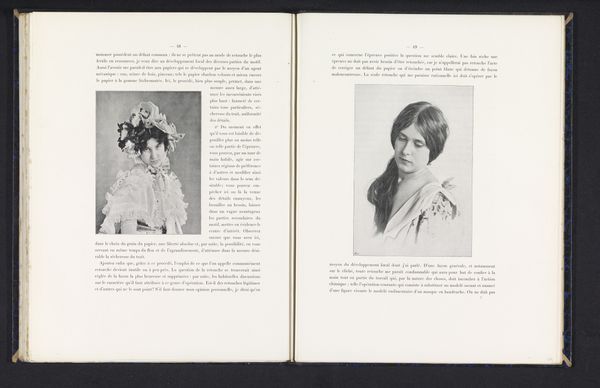
Reproductie van een geschilderd portret van Sonja Knips door Gustav Klimt before 1901
0:00
0:00
#
aged paper
#
paper non-digital material
#
paperlike
#
typeface
#
editorial typography
#
personal journal design
#
thick font
#
publication mockup
#
paper medium
#
publication design
Dimensions: height 245 mm, width 240 mm
Copyright: Rijks Museum: Open Domain
Editor: Here we have a reproduction of Gustav Klimt's portrait of Sonja Knips, created before 1901. It's interesting to see it within the pages of what appears to be a journal or publication. The portrait itself seems almost dreamlike, very delicate in its color palette. How do you interpret this work within its likely historical context? Curator: That's a great observation. Framing this image within its contemporary publications immediately shifts how we view it. Klimt, along with other artists of the Vienna Secession, was consciously challenging the established artistic norms and deeply ingrained societal roles, particularly for women. Looking at this publication and portrait, how does it negotiate those changing social and political landscapes? Does Sonja appear passive, or do you see hints of agency? Editor: That’s a fascinating way to look at it. I initially saw it as passive, almost a decorative rendering. But considering the Secessionist movement, maybe there’s a quiet rebellion in her stillness? A deliberate contrast to traditional, performative femininity, perhaps? Curator: Exactly. Think about the Secession's focus on Gesamtkunstwerk, the "total work of art," where every element, from the painting to its presentation, contributes to the message. This portrait, reproduced here, becomes part of a larger discourse around modern identity and female representation in a rapidly changing world. What effect do you think this mediated context might have on our understanding of the artist and his muse? Editor: It makes it feel less like a standalone piece and more integrated with the cultural debates of the time. I’d never really considered the publishing context so important. Curator: Precisely. It reveals how art, even a seemingly simple portrait, participates in broader conversations about gender, power, and the very definition of modernity. Editor: I'll definitely look at artworks in publications differently going forward. Curator: As will I. It shows how much context matters when interpreting a piece.
Comments
No comments
Be the first to comment and join the conversation on the ultimate creative platform.
